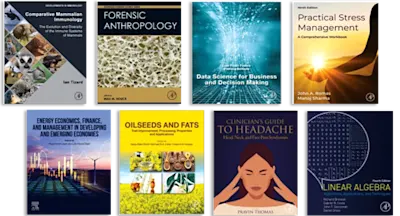
Biointegration of Medical Implant Materials
Science and Design
- 1st Edition - July 13, 2010
- Imprint: Woodhead Publishing
- Editor: Chandra P. Sharma
- Language: English
- Paperback ISBN:9 7 8 - 0 - 0 8 - 1 0 1 4 7 1 - 4
- eBook ISBN:9 7 8 - 1 - 8 4 5 6 9 - 9 8 0 - 2
Biointegration is essential for the successful performance of implanted materials and devices within the human body. With an increasing number and wide range of implant procedures… Read more
Purchase options

Institutional subscription on ScienceDirect
Request a sales quote- Provides a unique and comprehensive review of recent techniques and research into material and tissue interaction and integration
- Discusses soft tissue biointegration with chapters on the biocompatibility of engineered stem cells, corneal tissue engineering, vascular grafts and replacement materials for facial reconstruction
- Reviews particular techniques in drug delivery featuring inorganic nanoparticles and functionalized nanoparticles for targeted drug delivery
- Edition: 1
- Published: July 13, 2010
- No. of pages (Paperback): 424
- Imprint: Woodhead Publishing
- Language: English
- Paperback ISBN: 9780081014714
- eBook ISBN: 9781845699802
CS
Chandra P. Sharma
Dr. Chandra P. Sharma is a former Adjunct Professor, Department of Pharmaceutical Biotechnology, Manipal College of Pharmaceutical Sciences, Manipal University, and Hon. Emeritus Professor, College of Biomedical Engineering and Applied Sciences, Purbanchal University, Kathmandu, Nepal. Dr. Sharma is a Solid-State Physicist from IIT Delhi and received his training in biomaterials area in the University of Utah with Prof. D.J. Lyman as a graduate student and in the University of Liverpool, England, with Prof. D.F. Williams as a Post-Doctoral Research Associate. Dr. Sharma has been awarded FBSE (Fellow Biomaterials Science and Engineering) by the International Union of Societies for Biomaterials Science and Engineering (IUS-BSE) in 2008 and FBAO (Fellow Biomaterials and Artificial Organs) by the Society for Biomaterials and Artificial Organs (India) (SBAOI) in 2011 and [17020_LE1] shares Whitaker and National Science Foundation Award—International Society for Artificial Organs (ISAO) USA, invited member ACS (2015–2018).
[17020_LE1]Please check the phrase “and shares Whitaker and National…” for clarity and amend if necessary.